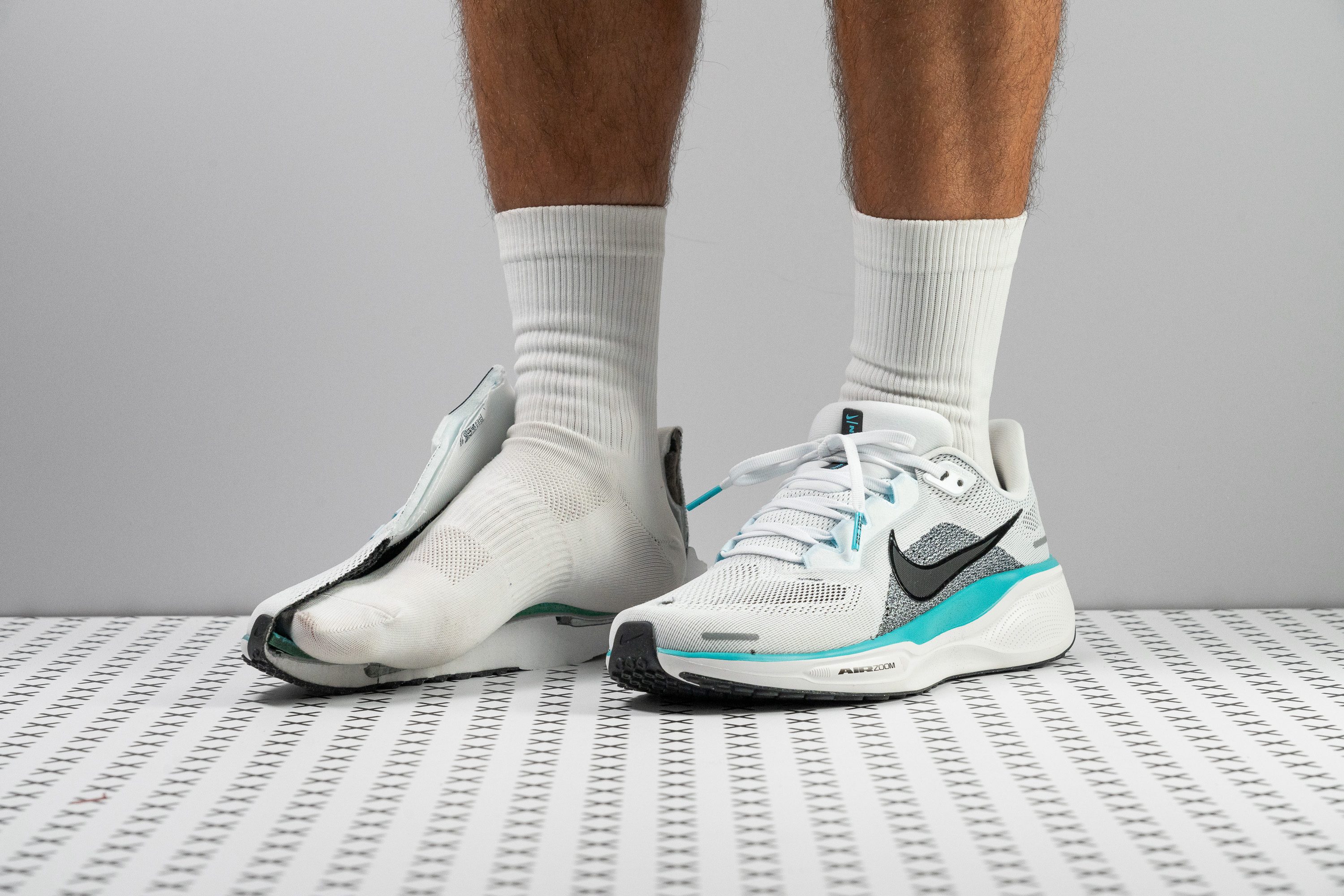Our verdict
- Top pick in best running shoes
- Top pick in best Nike running shoes
Pros
- Enhanced for heel strikers
- New ReactX foam!
- Improved breathability
- Plush upper
- Good durability
- Several stability enhancements
- Newly designed rocker and bevel
- Solid performance
- Superior lockdown
- Sustainable features
Cons
- Price increased by $10
- Worse than the v40 in cold temperatures
- Poor grip
Audience verdict
- Top 28% in Nike running shoes
- Top 28% in running shoes for walking
- Top 3% most popular running shoes
Comparison
The most similar running shoes compared
+ + Add a shoe | |||||
|---|---|---|---|---|---|
| Audience score | 88 Great! | 83 Good! | 77 Decent! | 81 Good! | |
| Price | $140 | $140 | $75 | $140 | |
| Pace | Daily running | Daily running | Daily running | Daily running | |
| Shock absorption | Moderate | - | Moderate | Low | |
| Energy return | Moderate | - | Low | High | |
| Traction | Low | - | Moderate | Moderate | |
| Arch support | Neutral | Neutral | Neutral | Neutral | |
| Weight lab Weight brand | 9.9 oz / 281g 10 oz / 283g | 10.1 oz / 286g 10.4 oz / 295g | 9.3 oz / 265g 9.4 oz / 267g | 10.8 oz / 305g 10.8 oz / 307g | |
| Drop lab Drop brand | 11.4 mm 10.0 mm | 11.6 mm 10.0 mm | 10.1 mm 10.0 mm | 11.5 mm 10.0 mm | |
| Strike pattern | Heel | Heel | Heel | Heel | |
| Size | True to size | True to size | Slightly small | True to size | |
| Midsole softness | Soft | Soft | Balanced | Soft | |
| Difference in midsole softness in cold | Normal | Normal | Small | Small | |
| Toebox durability | Decent | Bad | Decent | Decent | |
| Heel padding durability | Good | Good | Good | Good | |
| Outsole durability | Good | Decent | Good | Good | |
| Breathability | Moderate | Breathable | Moderate | Breathable | |
| Width / fit | Medium | Medium | Medium | Medium | |
| Toebox width | Medium | Medium | Medium | Wide | |
| Stiffness | Flexible | Stiff | Moderate | Flexible | |
| Torsional rigidity | Flexible | Moderate | Moderate | Flexible | |
| Heel counter stiffness | Stiff | Stiff | Moderate | Stiff | |
| Heel lab Heel brand | 33.6 mm 37.0 mm | 33.6 mm 34.0 mm | 32.2 mm 32.0 mm | 27.6 mm 22.0 mm | |
| Forefoot lab Forefoot brand | 22.2 mm 27.0 mm | 22.0 mm 24.0 mm | 22.1 mm 22.0 mm | 16.1 mm 12.0 mm | |
| Widths available | NormalWideX-Wide | Normal | NarrowNormalWideX-Wide | NormalWide | |
| Orthotic friendly | ✓ | ✓ | ✓ | ✓ | |
| Season | All seasons | SummerAll seasons | All seasons | SummerAll seasons | |
| Removable insole | ✓ | ✓ | ✓ | ✓ | |
| Ranking | #125 Top 34% | #270 Bottom 28% | #342 Bottom 8% | #300 Bottom 20% | |
| Popularity | #11 Top 3% | #160 Top 43% | #60 Top 16% | #262 Bottom 30% |
Who should buy
We've thoroughly tested the Pegasus 41 to its limits and are convinced it's a fantastic choice for:
- Beginners to running seeking a reliable and versatile daily trainer for short, medium and even long runs.
- Loyal Pegasus aficionados who upgrade annually, as they will find this version to be an exceptional update.
- Runners who found the previous React midsole lacking in energy return, as they will appreciate the enhanced performance of the new ReactX foam.
- Heel strikers in search of an affordable, durable, and reliable daily training shoe.
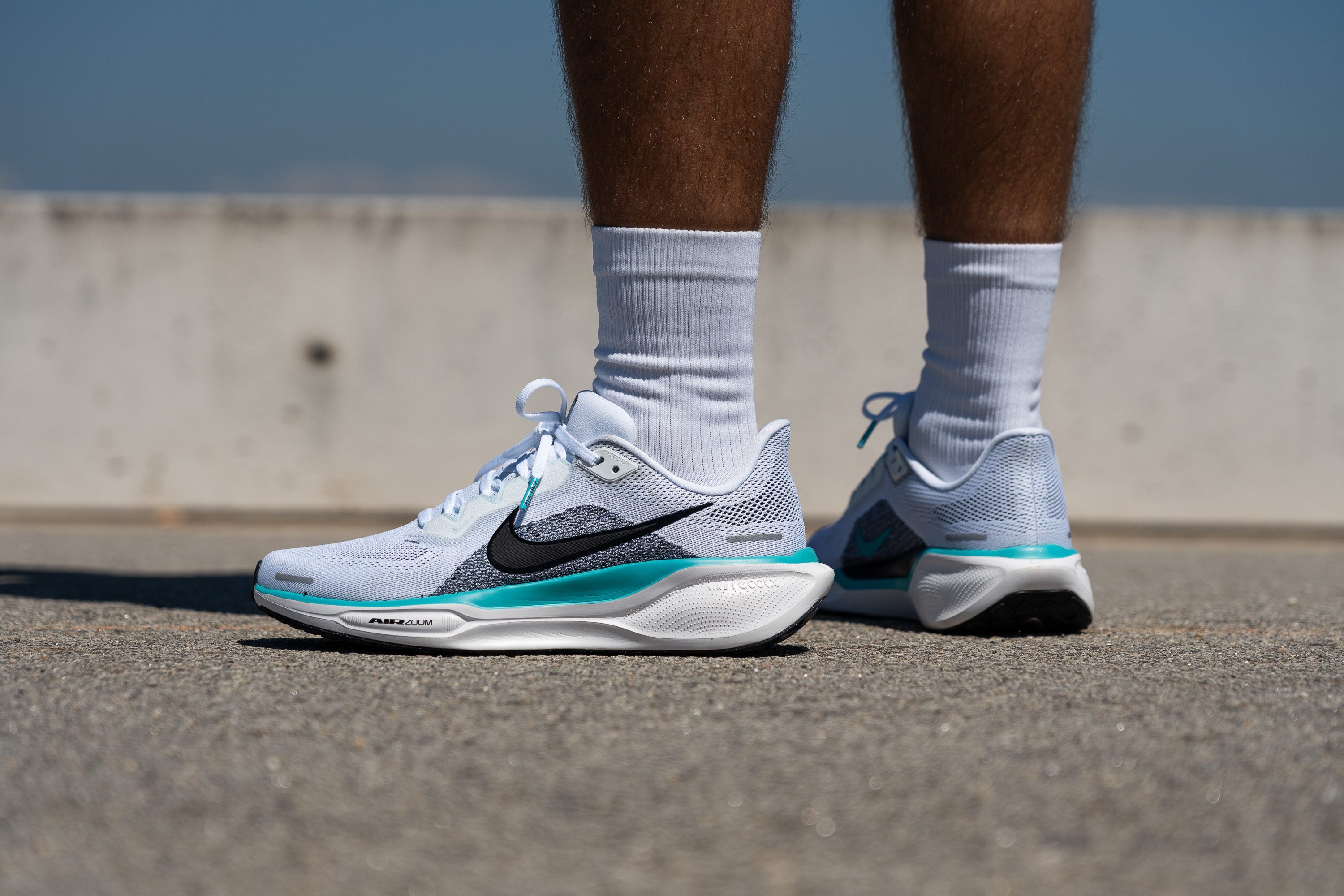
Who should NOT buy
We've put the Pegasus 41 through rigorous tests and, based on our findings, we think it's not the best option for certain runners.
Specifically, the shoe's cushioning and high heel-to-toe drop make it less suitable for forefoot strikers who may find the design uncomfortable for their running style. For those runners, we recommend considering alternatives like the Saucony Ride 17 or the Hoka Clifton 9, which provide more cushioning in the forefoot.
Additionally, we believe the Pegasus 41 may disappoint those who prefer a lightweight running experience. The shoe's weight might feel cumbersome, particularly for runners accustomed to featherweight models.

We found in the lab that competitors like the ASICS Novablast 4 or the New Balance FuelCell Rebel v4 present a lighter design with similar pricing. These models are engineered for a lightweight experience—albeit with less durability—which we believe makes them better choices for runners seeking comfort without the bulk.
Cushioning
Shock absorption
Shock absorption remains average in the heel at 125 SA and lower in the forefoot at 92 SA. These are typical numbers for a classic daily trainer that steers away from the maximalist trend, so no complaints here. If you’re looking for more midsole, consider the Nike Vomero 18.
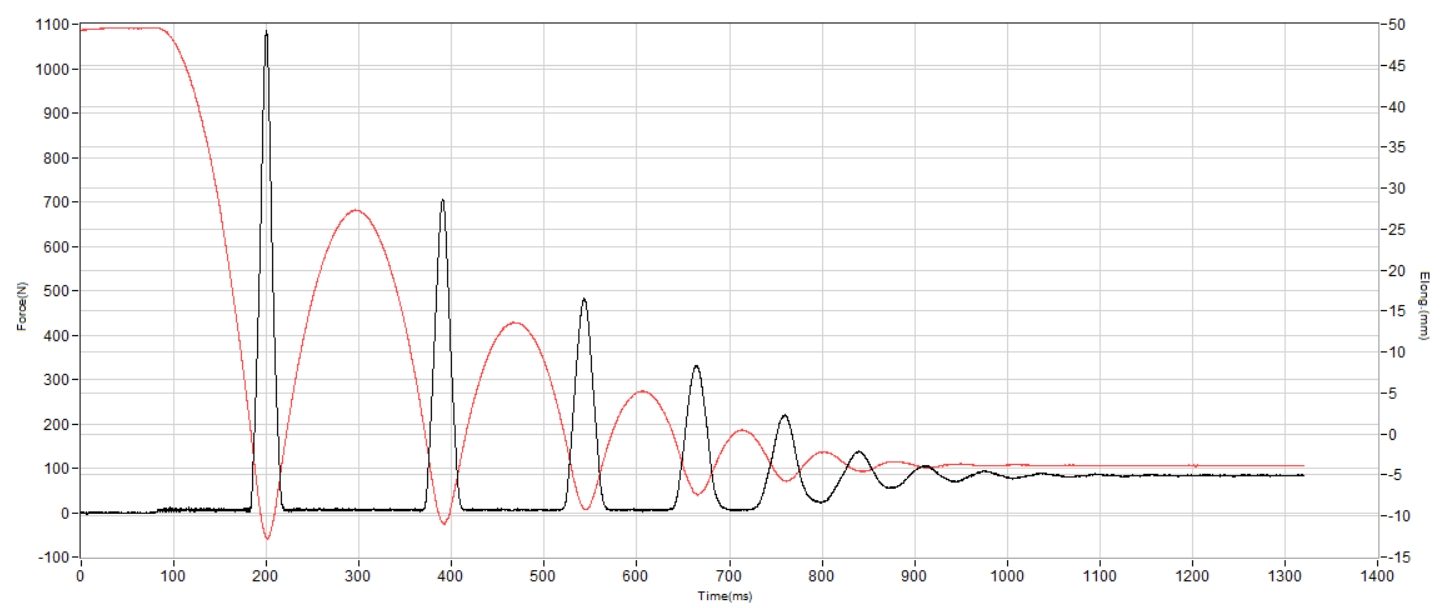
| Pegasus 41 | 125 SA |
| Average | 129 SA |
Energy return
The switch from React to ReactX doesn’t bring much energy return, unlike what Nike claimed. It delivers 55.5% in the heel and 61.4% in the forefoot—the latter clearly boosted by the Air Zoom unit.
| Pegasus 41 | 55.5% |
| Average | 58.5% |
Heel stack
Running shoes have been growing, and in the last two or three years, we have yet to see an update that significantly reduces stack height. Instead, the trend is towards increasing the height of shoes and adopting a maximalist approach in several daily trainers.
The Pegasus 41 follows this trend, adding more than 3 mm to reach a heel height of 33.6 mm. This is still a very average figure that works well for heel strikers, offering substantial protection even for marathoners looking for a long run shoe. However, it's still outside the maximalist category.
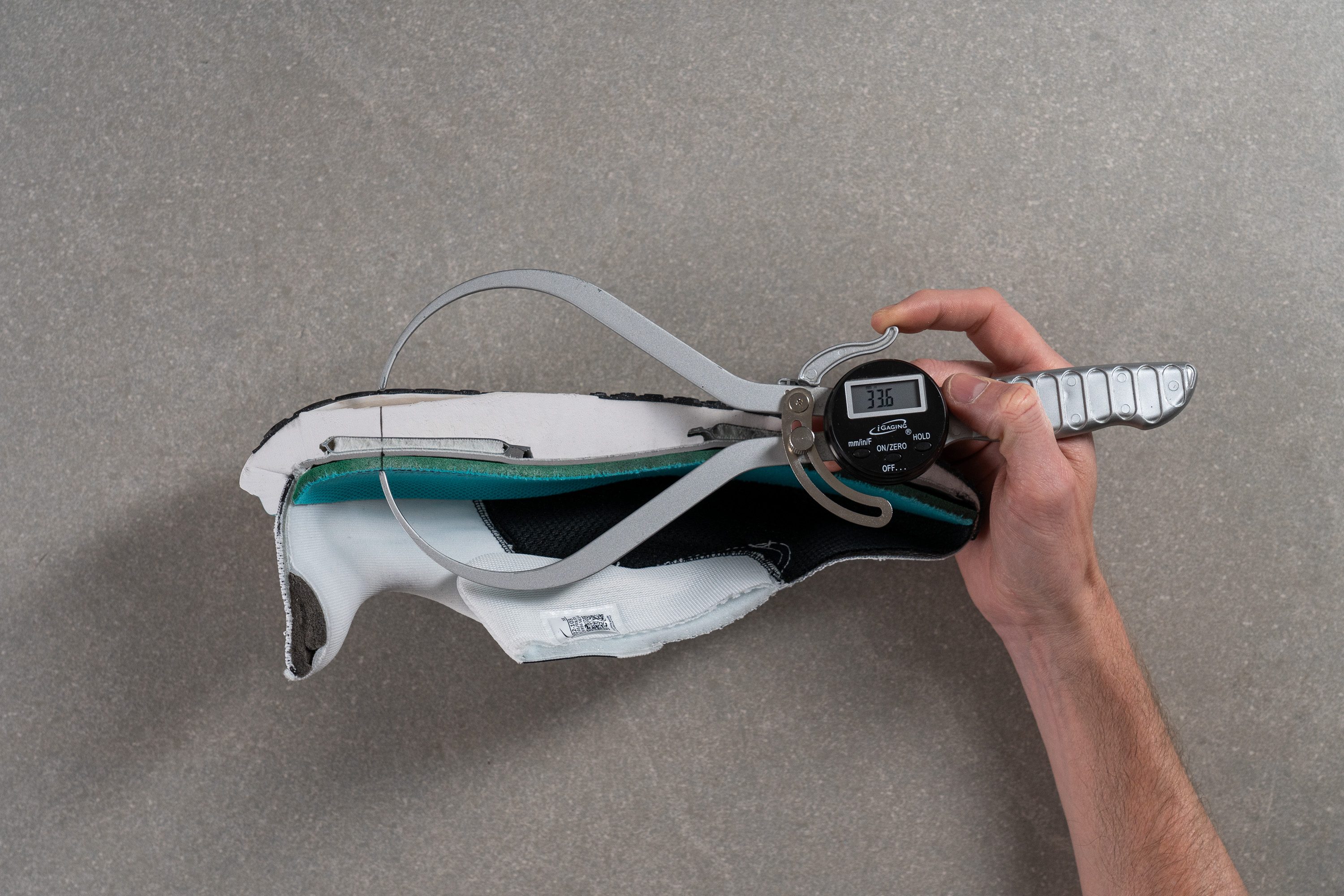
| Pegasus 41 | 33.6 mm |
| Average | 34.8 mm |
Forefoot stack
The forefoot measures just 22.2 mm, which may not be enough for forefoot strikers—except for lighter runners who prefer a more grounded, natural ride without much cushioning underfoot.
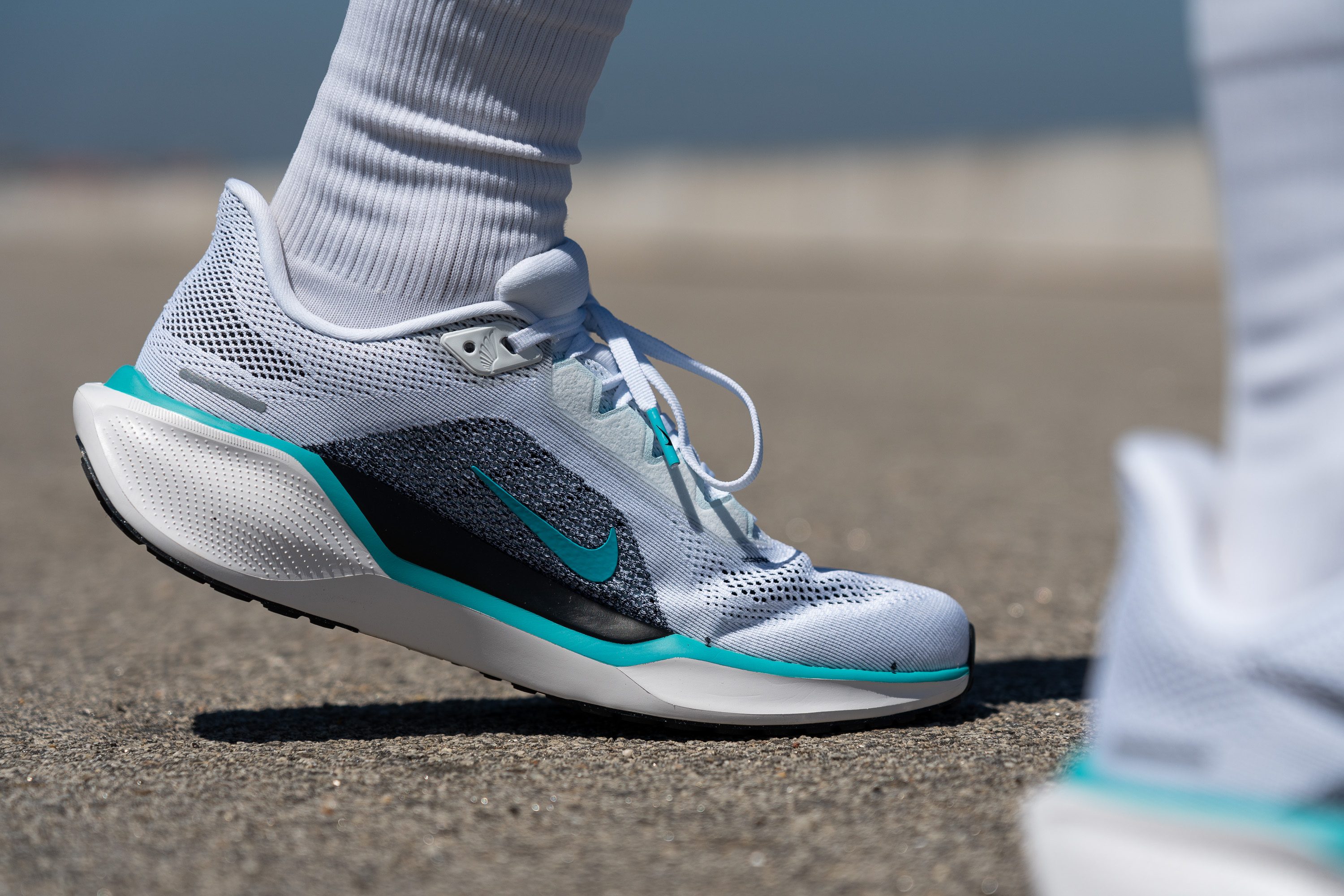
While we think that forefoot strikers can enjoy the Pegasus 41 for easy runs up to 15K, those planning longer distances might want to consider the Nike Vomero 17. We even refer to it as the "Pegasus Premium" because it includes better materials and a layer of ZoomX foam, plus more stack height in this area. And a higher price tag, too.
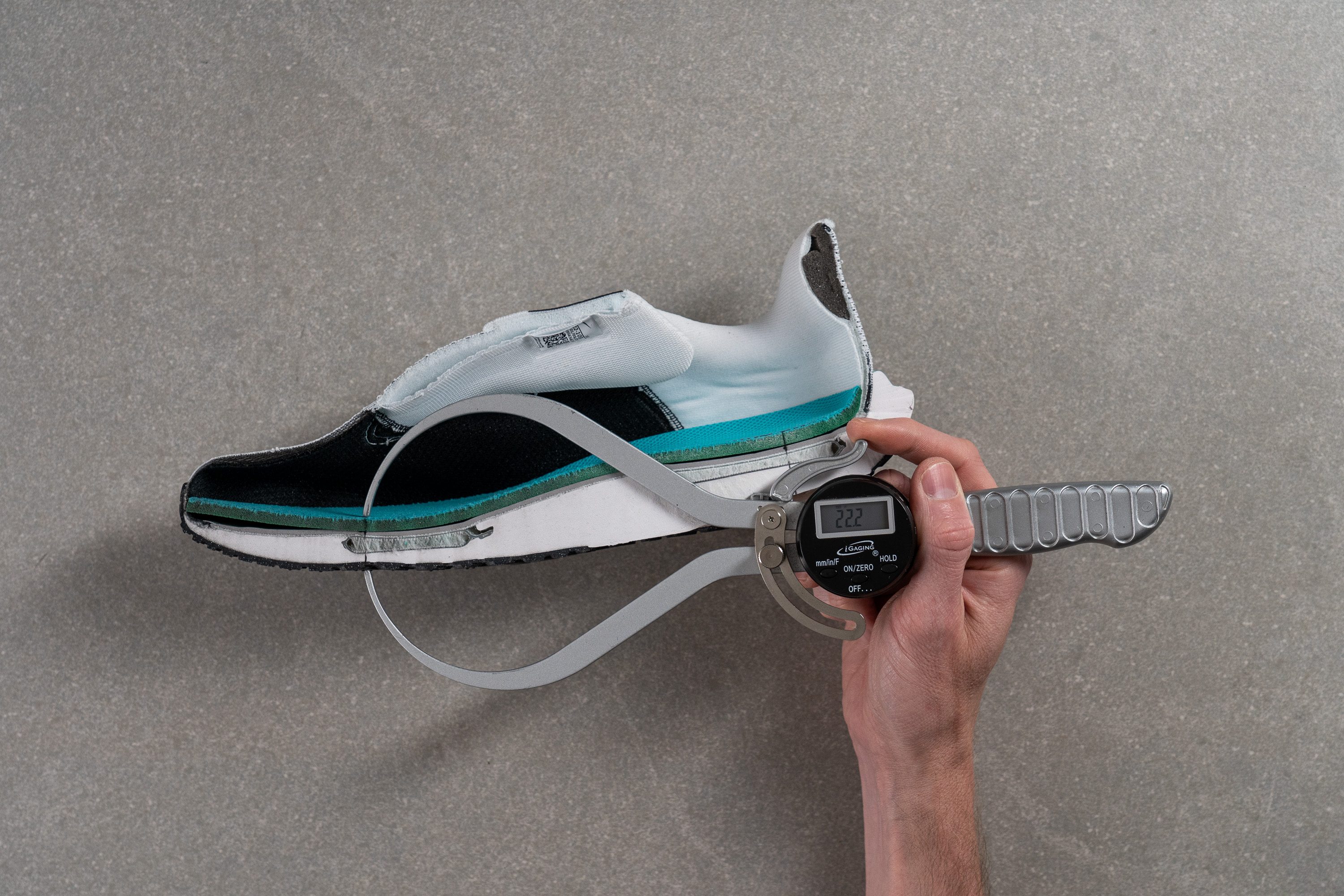
| Pegasus 41 | 22.2 mm |
| Average | 26.2 mm |
Drop
We always measure the drop according to the consistent standards set by World Athletics, and we discovered that the actual offset of the Pegasus 41 remains in the high end of the spectrum at 11.4 mm, only slightly higher than the 10 mm Nike claims. We're happy with such a minor discrepancy.
| Pegasus 41 | 11.4 mm |
| Average | 8.6 mm |
Midsole softness
Speaking of a luxurious feel, the standout feature of the Pegasus 41 is the introduction of ReactX foam, which we previously encountered in the InfinityRN 4 but is now making its debut in Nike's best-selling series.
What's special about this foam? Essentially, it's a refined version of React that's softer, bouncier, and, according to Nike, more sustainable. We give a big thumbs up to all these improvements here in the lab, especially because React was starting to feel a bit outdated against most competitors.
To truly gauge the softness of the ReactX foam, we sliced the shoe in half and discovered that at 15.8 HA in our durometer, it matched our initial impressions—it's plusher than the React foam in the Pegasus 40, which measured 17.6 HA, though not by a huge margin.
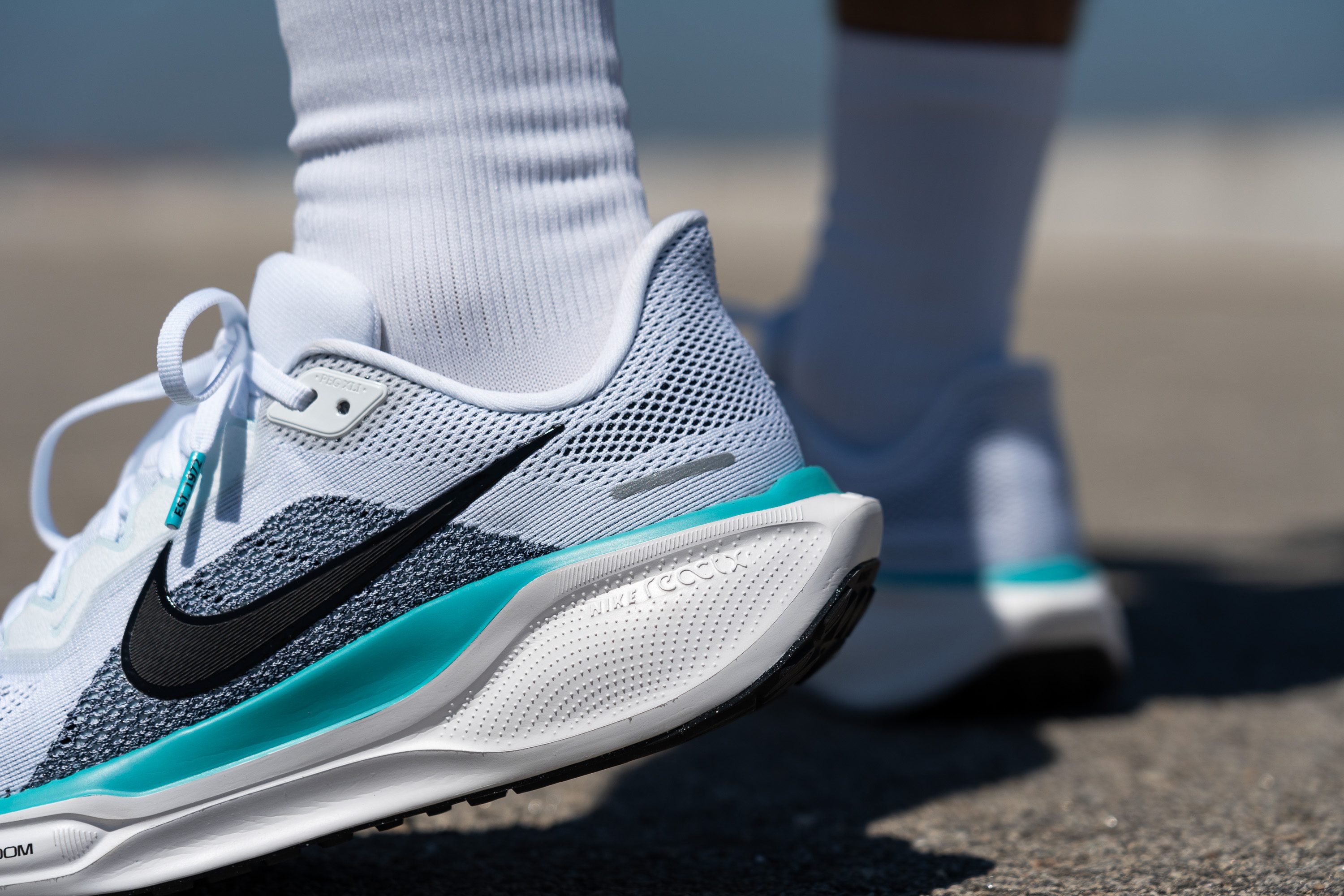
Nonetheless, it's a positive modification for us as the shoe also returns more energy with each stride, albeit not quite reaching ZoomX levels.
| Pegasus 41 | 15.8 HA |
| Average | 20.4 HA |
Rocker
We mentioned before that this is an outstanding Peg for heel strikers, and the rocker that we discovered only confirms this. This is definitely the most curved sole Nike has ever designed for a Pegasus, featuring a notable heel bevel and a more pronounced toe spring.
Don’t get us wrong—it’s still a shoe that delivers a classic, natural ride, nothing like the Hoka Cielo X1 at all. However, in our view, those who appreciate rockered running shoes that help launch them forward when landing on the heel will find this to be the best Pegasus yet, without a doubt.
Air Zoom
Another classic feature of the Pegasus series is the Air Zoom technology, which has been a staple for over a decade and repeats in version 41 with two units—one in the heel and one in the forefoot.
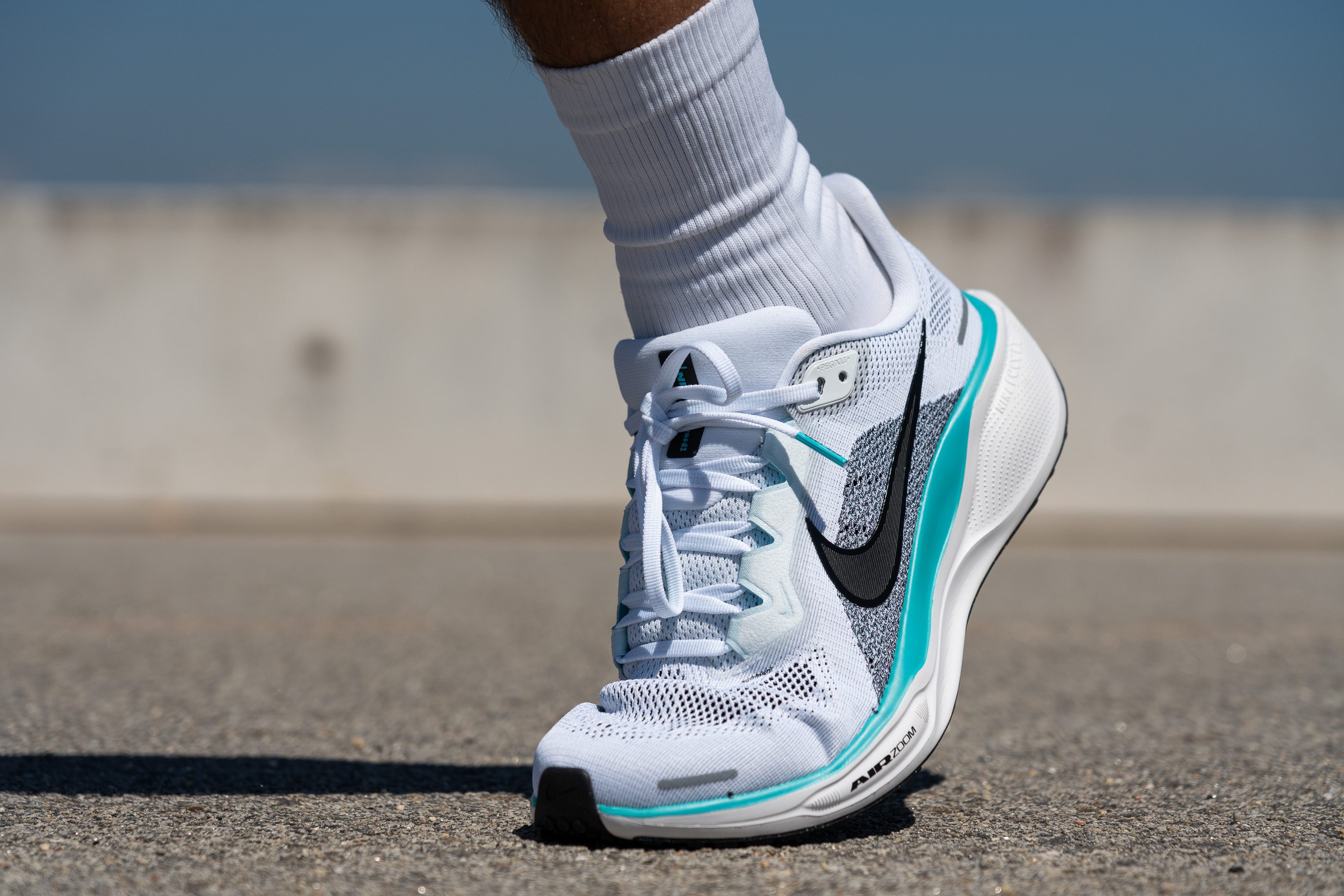
While they don't make a significant difference over the foam itself, they certainly don't detract from the shoe's performance either. Air Zoom performs reliably and endures forever, but of course they are not as responsive as the units in the Alphafly 3.

Size and fit
Size
Nike Pegasus 41 fits true to size (613 votes).
Width / Fit
The Pegasus series has often been regarded as the “default” daily trainer in the industry—a shoe designed to follow Pareto’s principle by catering to the majority of runners with its versatile-yet-reliable fit.
To verify this, we created a gel mold of the shoe's interiors for comparison against other shoes. After testing and measuring the widest part of the shoe, we found it to be 94.6 mm. This measurement aligns with most average workhorse trainers but leans slightly toward a snug-fit profile, a consistent feature in Nike shoes.
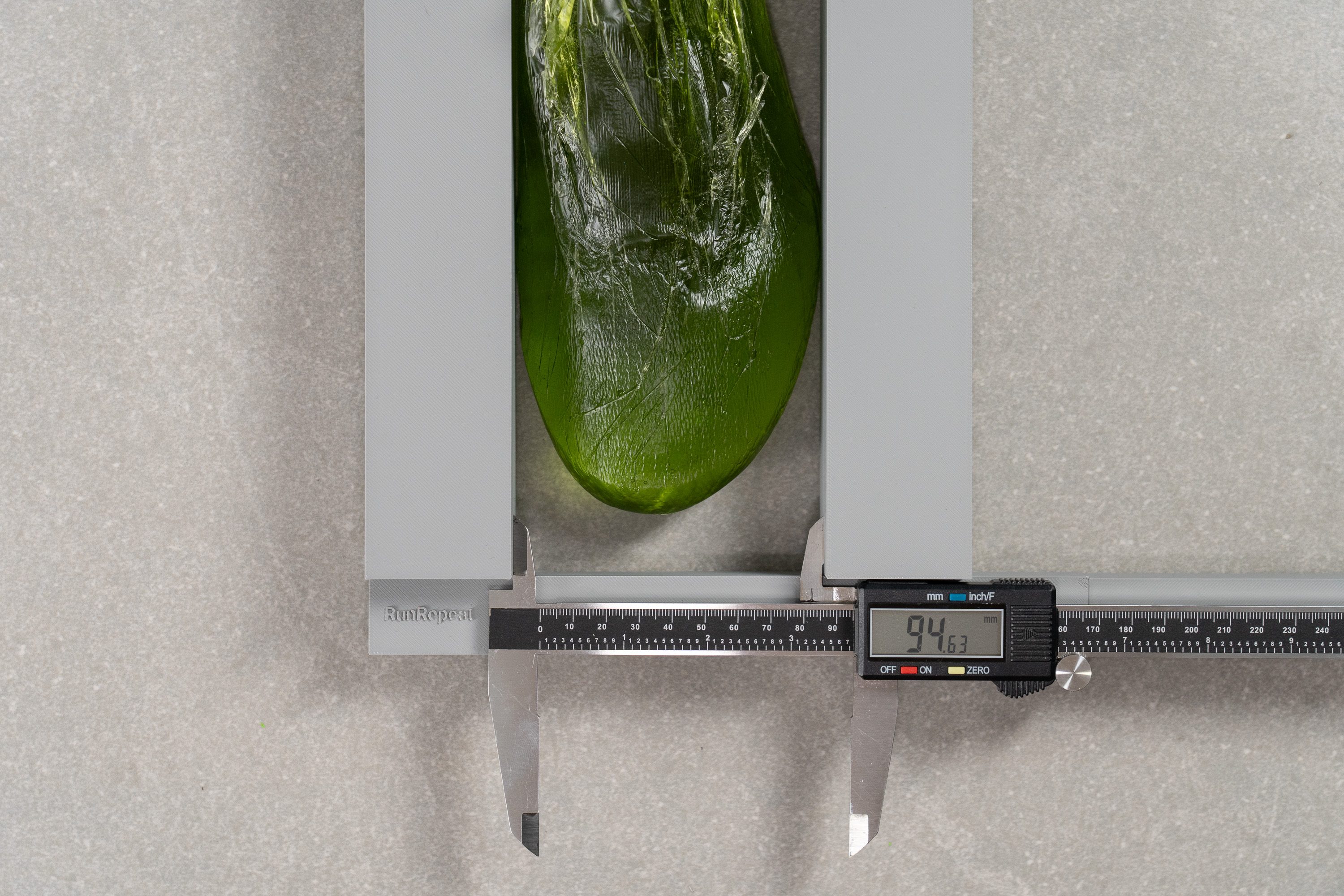
| Pegasus 41 | 94.6 mm |
| Average | 95.1 mm |
Toebox width
We had hoped for a roomier fit in the toe area with this update, but Nike retained the same tapered shape seen in other Pegasus models. After testing and measuring the gel mold again, we discovered a 72.9 mm toebox width.
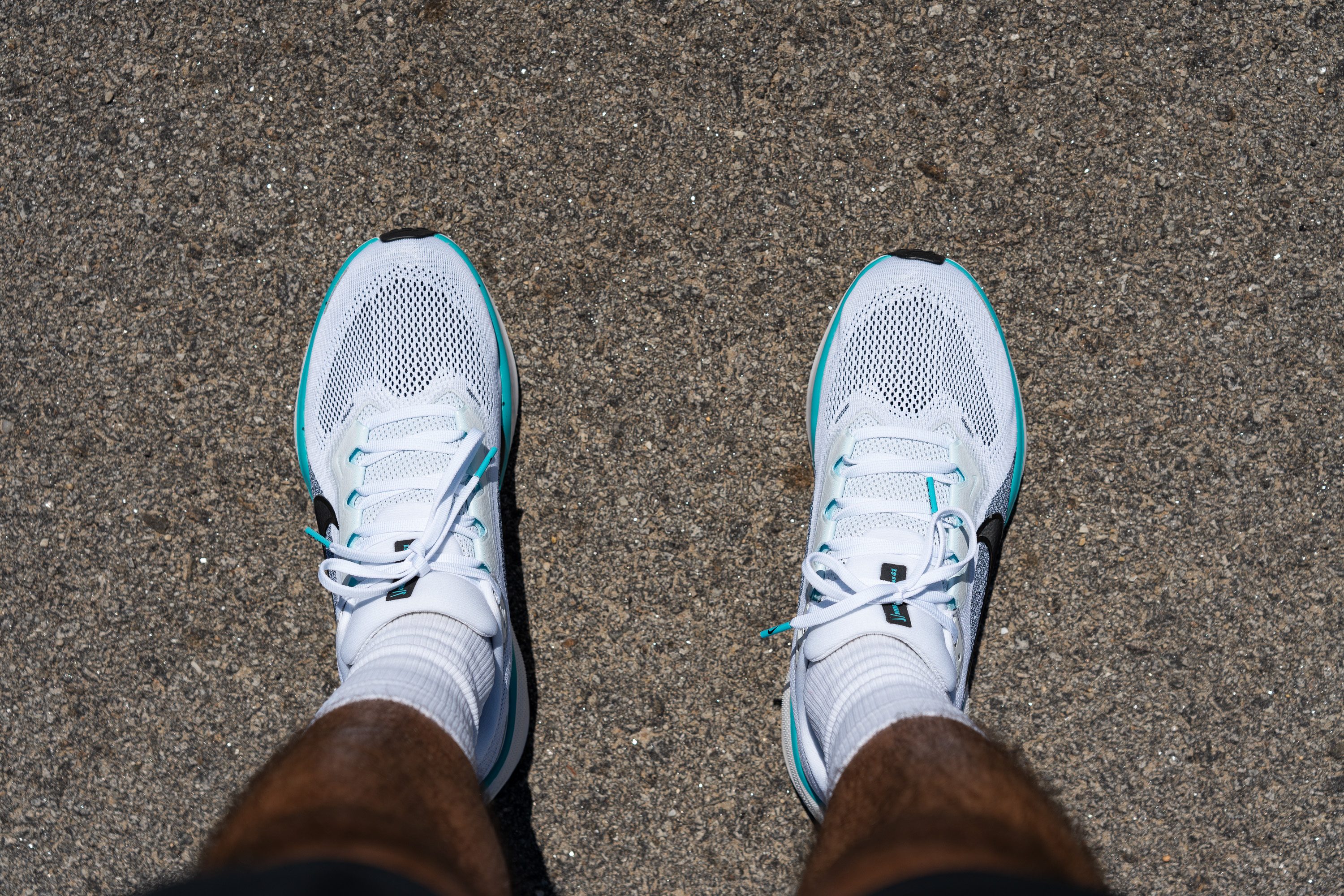
In our experience, this keeps the fit aligned with average daily trainers, although runners seeking more space for toe splay may feel limited and prefer the anatomic design of the Altra Torin 7.
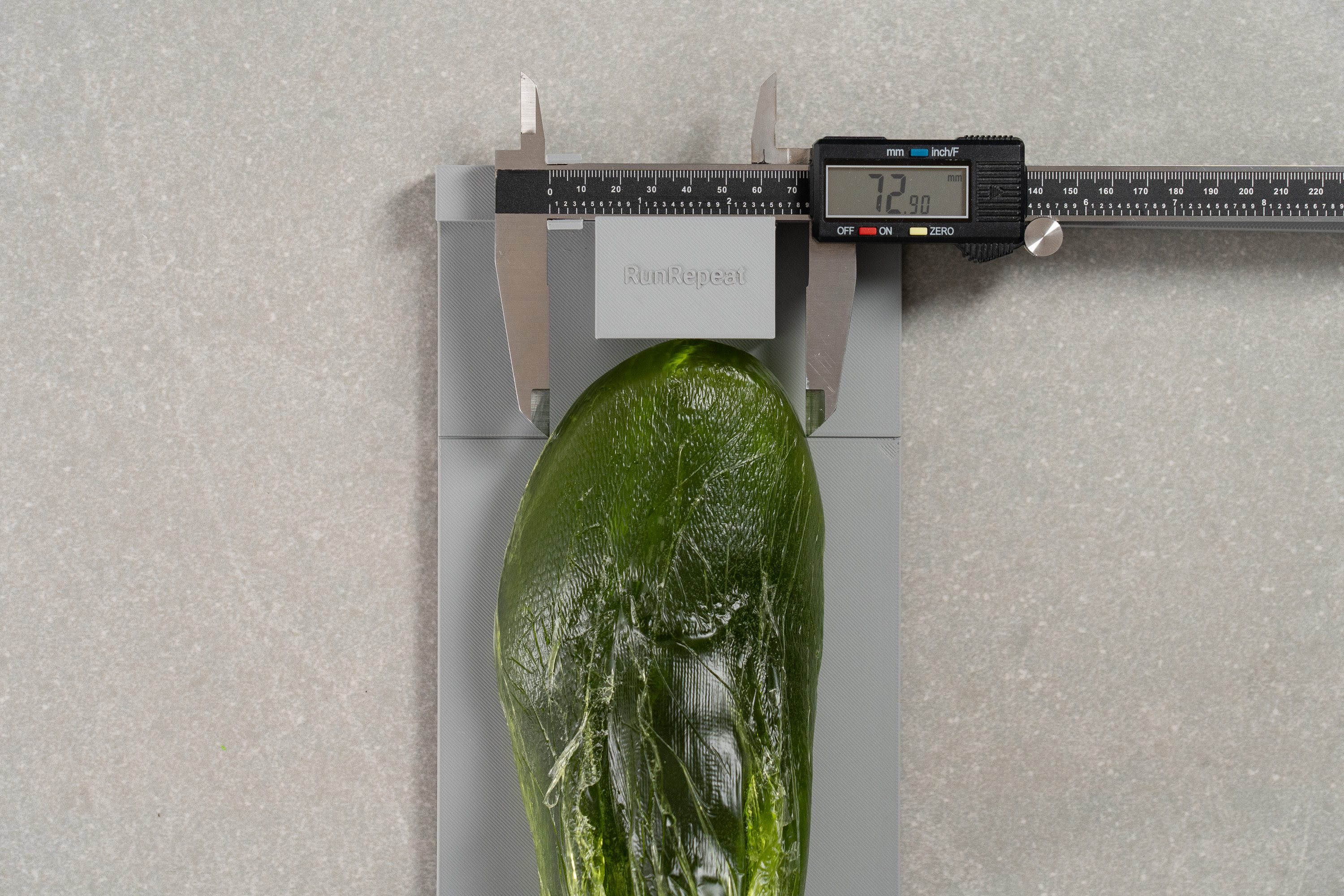
| Pegasus 41 | 72.9 mm |
| Average | 73.2 mm |
Toebox height
The Peg 41 offers an average toebox width and matches that with its vertical room.
Through our testing, we discovered a toebox height of 26.4 mm, which feels sufficient—thanks to its soft-breathable mesh that doesn’t press against the toes—though it’s far from being a high-volume upper.
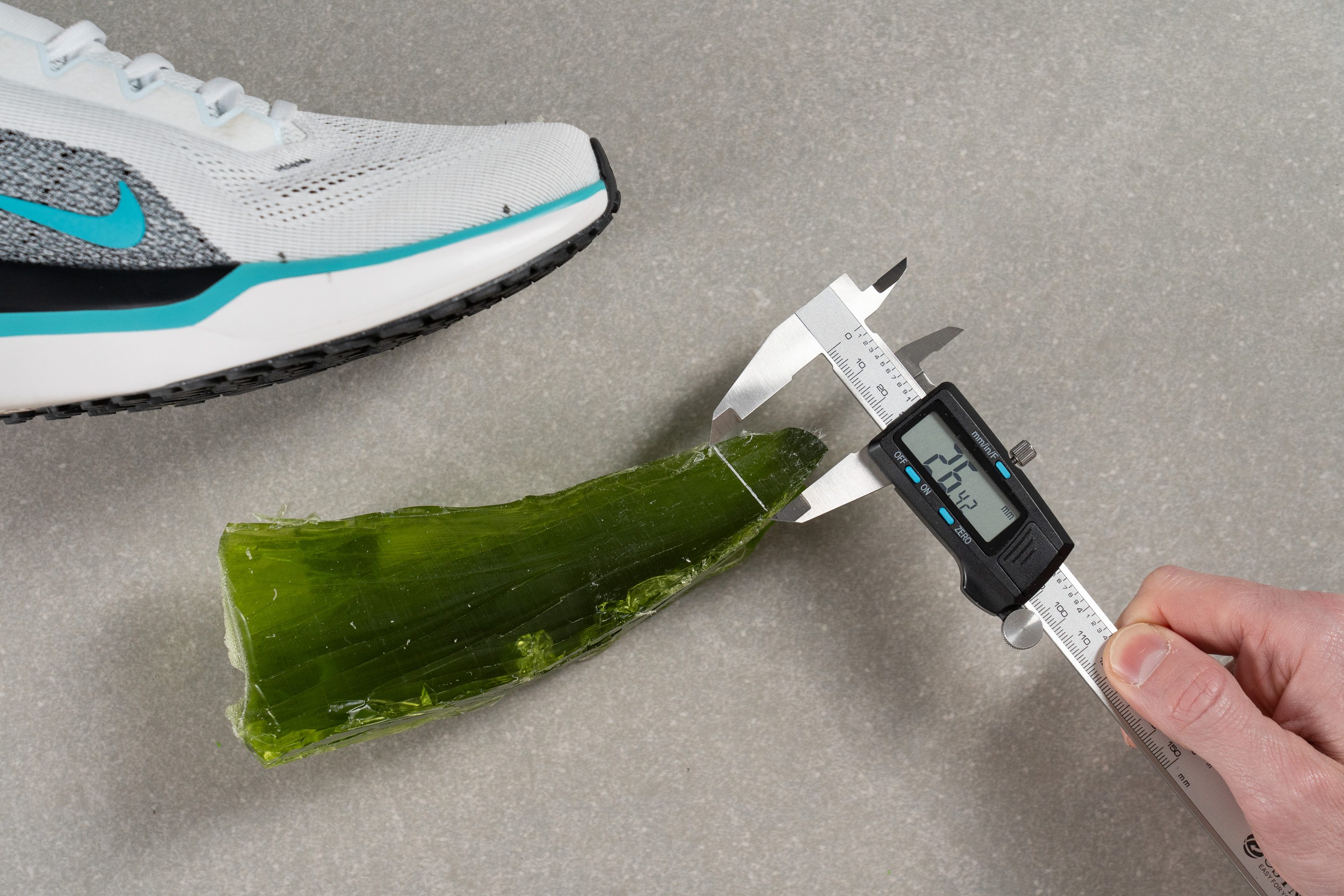
| Pegasus 41 | 26.4 mm |
| Average | 27.1 mm |
Traction / Grip
Traction test
We tested the outsole and recorded a surprisingly low grip score of 0.25, pointing to one of this shoe’s weakest areas. For runners who enjoy a sticky ride, this will fall short of expectations.
On wet pavement, we found it slid quite a bit. Dry performance was more acceptable but still underwhelming compared to nearly any daily trainer we’ve reviewed.
| Pegasus 41 | 0.25 |
| Average | 0.48 |
Outsole design
Turning our attention to the iconic waffle outsole—a design still thriving since Bill Bowerman's 1974 patent—we found that it includes multiple holes in the forefoot and a large longitudinal groove. Rubber coverage is solid, and we expect no early wear where foam is exposed.
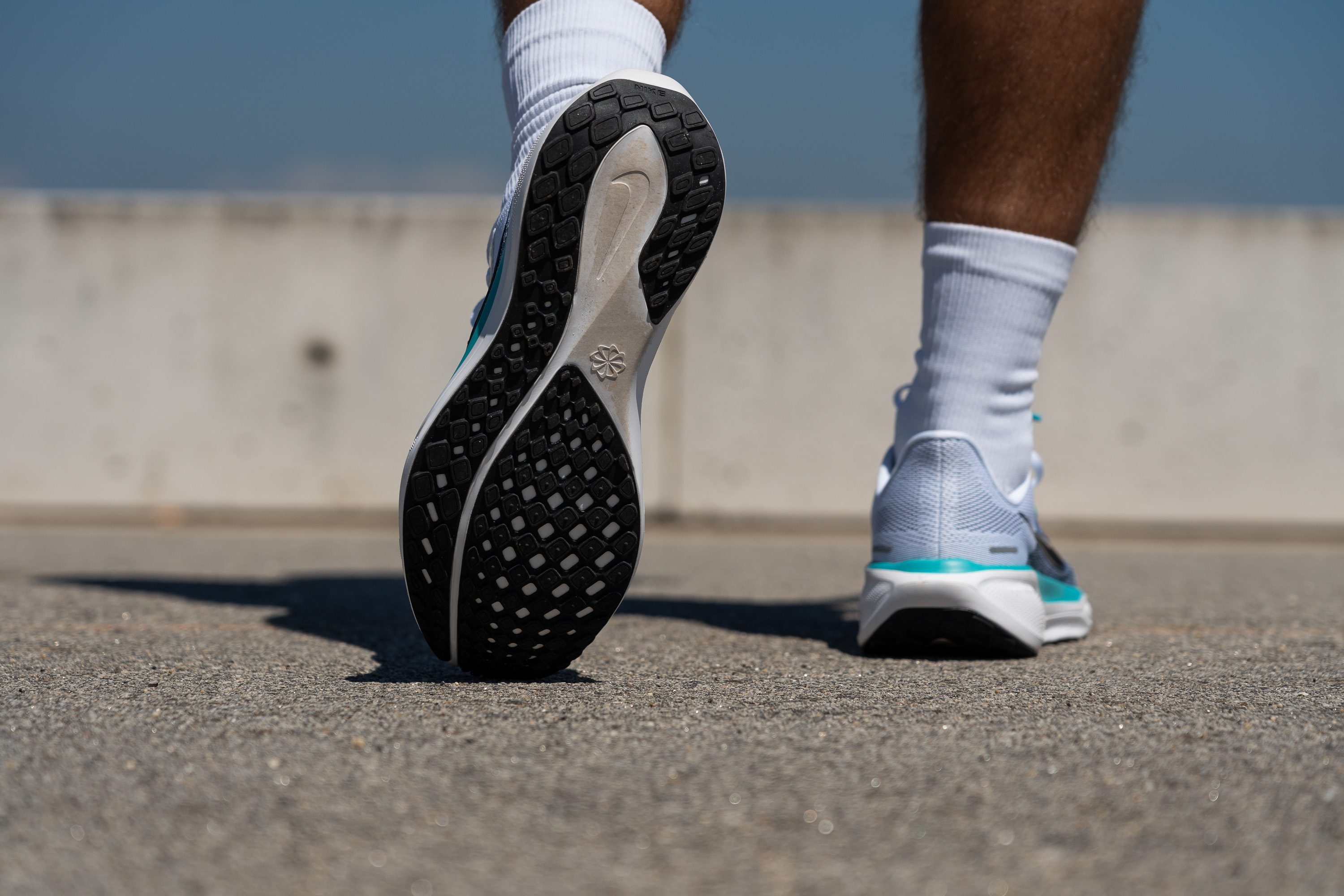
Flexibility / Stiffness
Despite its slightly more rockered design, we discovered during our test runs that the Pegasus 41 is still a classic running experience, largely due to its flexibility. The outsole design required only a minimal force of 9.4N to bend it to 30 degrees in our lab.
We're pleased with this outcome. In an era where some daily trainers have become super stiff, it's refreshing to see that some dependable, traditional daily trainers continue to provide comfort underfoot, promoting foot strength and remaining suitable for everyday activities beyond running.
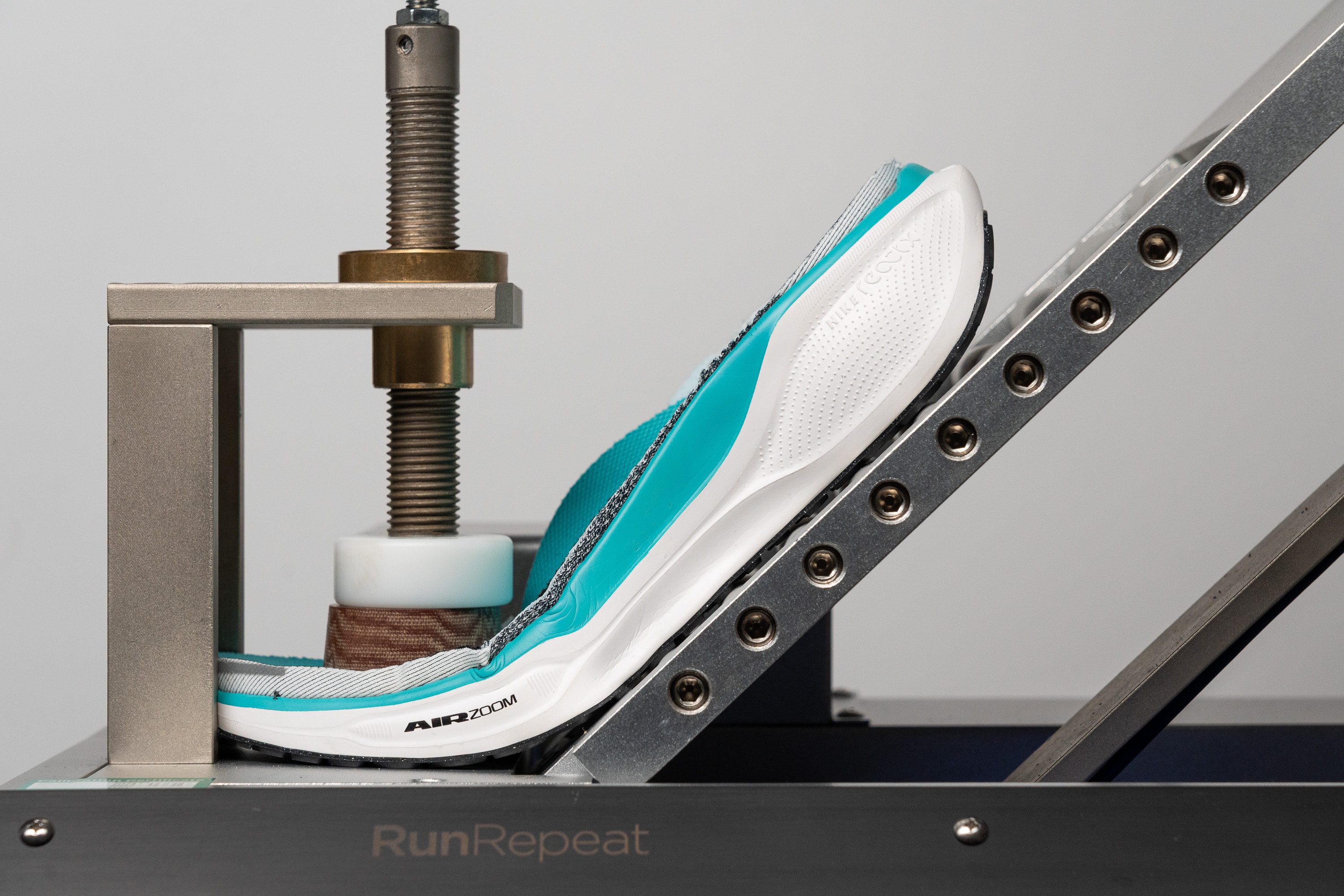
| Pegasus 41 | 9.4N |
| Average | 15.3N |
Weight
During our initial test runs, we didn't find the Pegasus 41 particularly heavy, and it seemed to us to be on par with the previous model and other workhorses. We later confirmed this on the scale, which showed a weight just under 10 oz—specifically, 9.9 oz (281g), a minor 0.2-oz bump from its predecessor.
While we consider this a decent weight, it's not fantastic by any means, especially since the market now includes many daily trainers that offer similar features but at a much lighter weight. We believe there's room for improvement in this regard for the next year's Pegasus.

| Pegasus 41 | 9.9 oz (281g) |
| Average | 9.3 oz (264g) |
Breathability
One of the aspects we were less fond of with the Pegasus 40 was its tendency to run a bit warm due to its dense upper. However, when we first unboxed this update, it was clear that Nike had addressed this issue. The ventilation holes are now prominently featured throughout the toebox, a promising initial sign, yet we still needed to confirm their effectiveness here in the lab.
We began our testing with the smoke-pumping machine. There, we discovered a clear improvement; with a score of 4/5, this is a 1-point upgrade from the v40 (3/5).
Using a light, we also examined how Nike has refined the shoe’s ventilation structure. We found that they went all-in for breathability in the toebox while reinforcing the structure in other areas of the shoe—like the midfoot, heel, and even the toecap. This should improve stability and durability.

Our focus then shifted to the toebox, the main contributor to the excellent ventilation. To get a closer look at those tiny holes, we turned on the microscope.
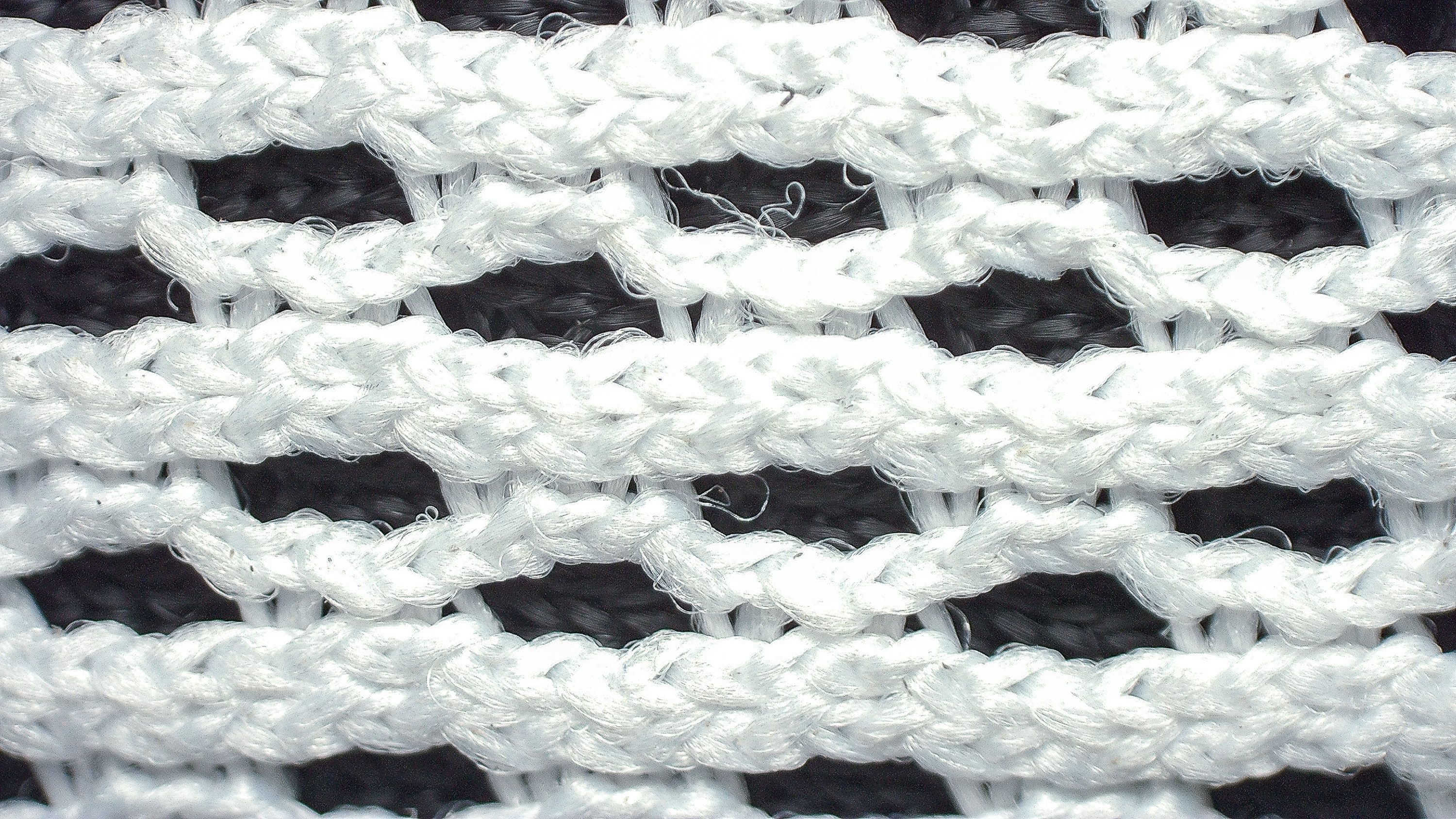
Under magnification, we could see the engineered mesh featuring numerous holes that facilitate the escape of hot air and moisture. While there's a black layer beneath these holes, it's thin enough to ensure it doesn’t significantly hinder airflow too much.
Certainly, without that underlying layer, the shoe might have scored a perfect 5/5 for ventilation in our evaluations. However, removing it would compromise comfort and durability—trade-offs we’re not willing to make in a daily trainer.
| Pegasus 41 | 4 |
| Average | 3.7 |
Stability
Lateral stability test
Besides the ReactX foam upgrade, another significant improvement in the Pegasus 41 over most of its predecessors is stability, especially for heel strikers.
Right from the start, we found this model to be much more supportive than earlier versions, achieving this through subtle changes that we will discuss in a moment, and some interesting enhancements such as midsole sidewalls and midfoot guidance in the outsole.
Torsional rigidity
Thanks to the full-length longitudinal groove running through the outsole, the torsional rigidity of the Pegasus 41 stays low, even with the addition of a few extra millimeters of foam in the midsole. We gave it a rating of 2 out of 5.
| Pegasus 41 | 2 |
| Average | 3.5 |
Heel counter stiffness
Conversely, the heel counter undergoes a significant change. We rated the Pegasus 40 at 2 out of 5, but for the Pegasus 41, we've increased the score to 4 out of 5. This adjustment clearly aims to trade a bit of comfort for increased stability, similar to what Adidas achieved with the Supernova Rise, particularly benefiting heel strikers.
If rigid heel counters tend to irritate your Achilles, you might want to consider a shoe with an ultra-pliable heel like the On Cloudsurfer 7.
| Pegasus 41 | 4 |
| Average | 2.9 |
Midsole width - forefoot
The Pegasus 41 is noticeably larger compared to its predecessors, a change that positively enhances the stability of the shoe. It now provides a wider landing base suitable for every runner, regardless of their footstrike.
In the forefoot, we measured 115.6 mm, which puts it in the same class as the Vomero series, known for its wider design.
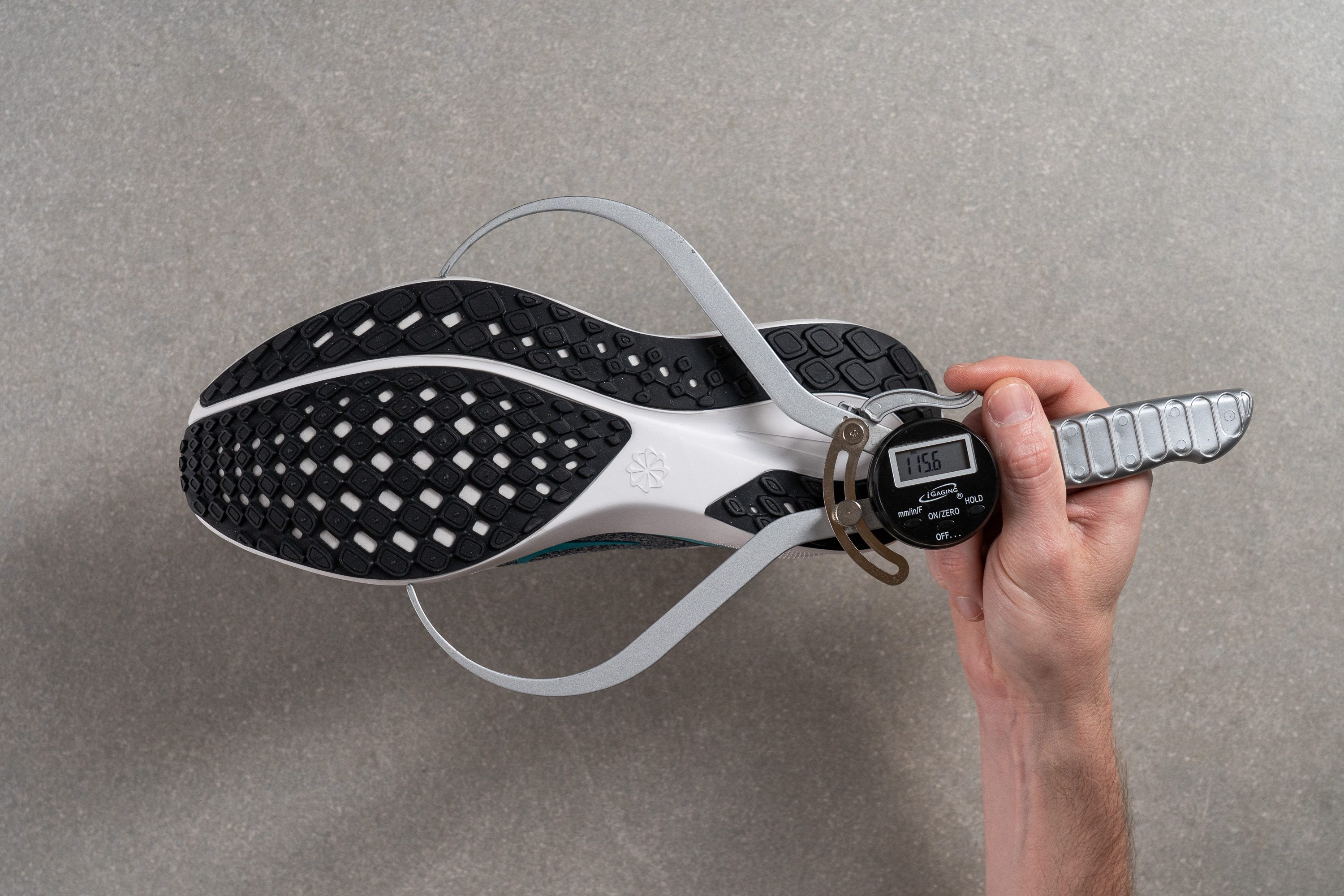
| Pegasus 41 | 115.6 mm |
| Average | 114.4 mm |
Midsole width - heel
If there was any significant drawback for heel strikers in the Pegasus, it was the narrow heel width, which has now been effectively addressed.
Measuring at 89.2 mm, the heel width is now truly comparable to most running shoes, offering a very standard design in this area, yet the shoe maintains its agility.
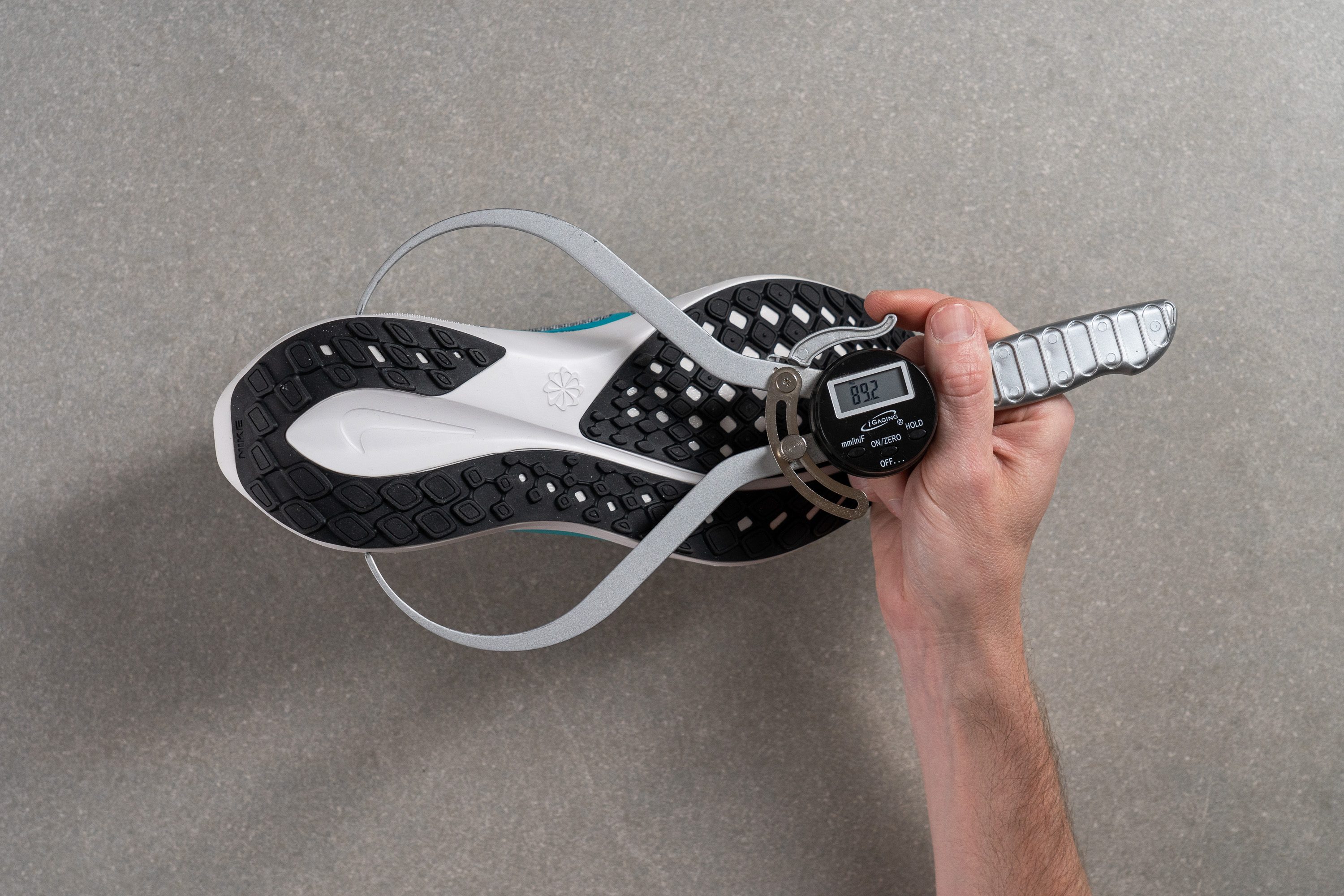
| Pegasus 41 | 89.2 mm |
| Average | 90.7 mm |
Durability
Toebox durability
After confirming its optimal breathability, it's now time to evaluate whether the engineered mesh upper also provides at least average durability. We were initially uncertain if the mesh would hold up due to its numerous ventilation holes.
Indeed, we found that it does. While the white mesh disappeared—as we anticipated—the secondary black layer remained intact, earning a 3/5 in our evaluation. This is reassuring, as most runners expect their Pegasus to endure not just for running, but also for multiple activities after their running days are over.
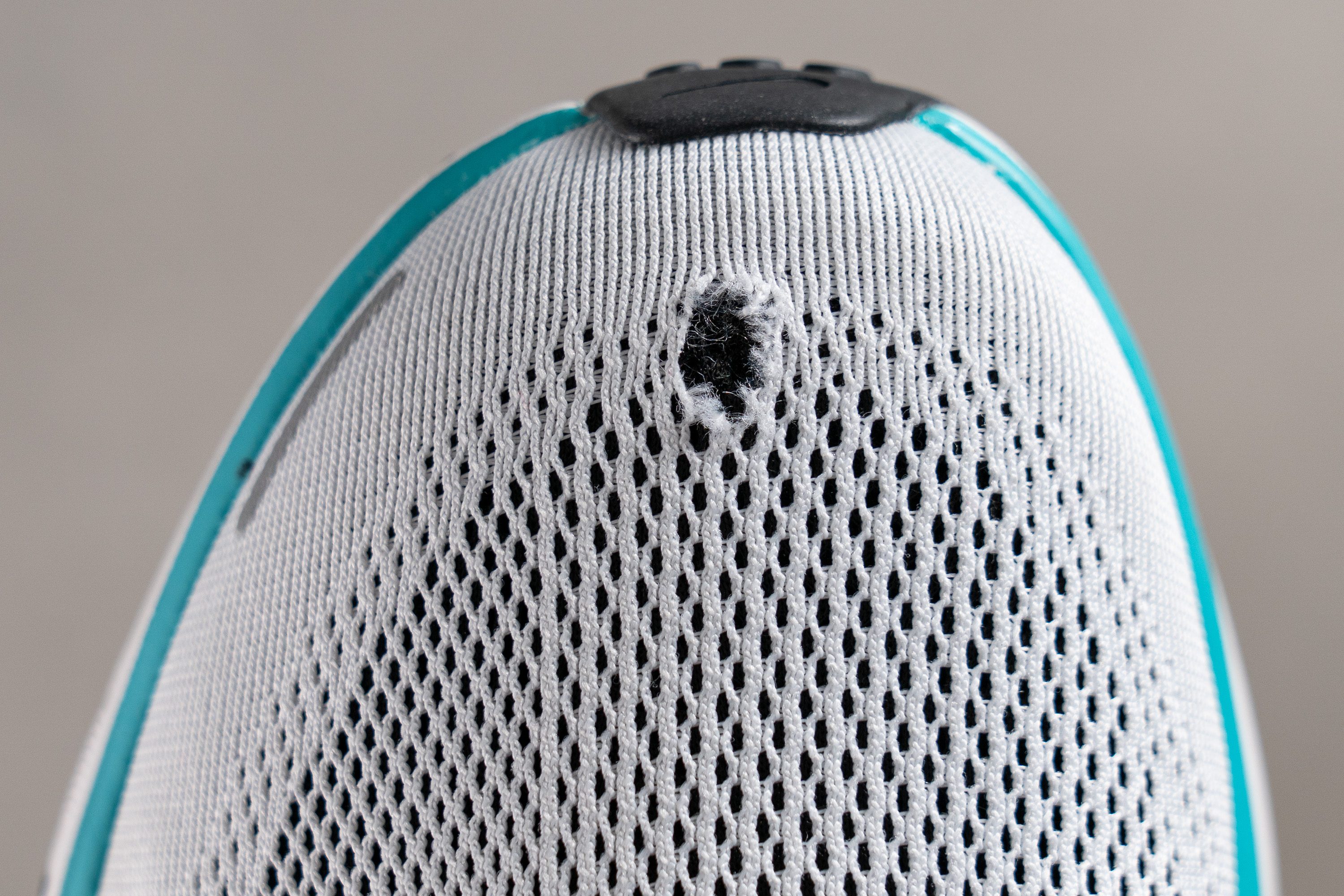
| Pegasus 41 | 3 |
| Average | 2.6 |
Heel padding durability
Another common area of concern for many runners in terms of durability is the Achilles padding, which can sometimes degrade after just a few runs.
However, we think this won't be a problem with the Pegasus 41. Scoring a 4/5 in our second Dremel test, it's highly unlikely to see early damage in this area.
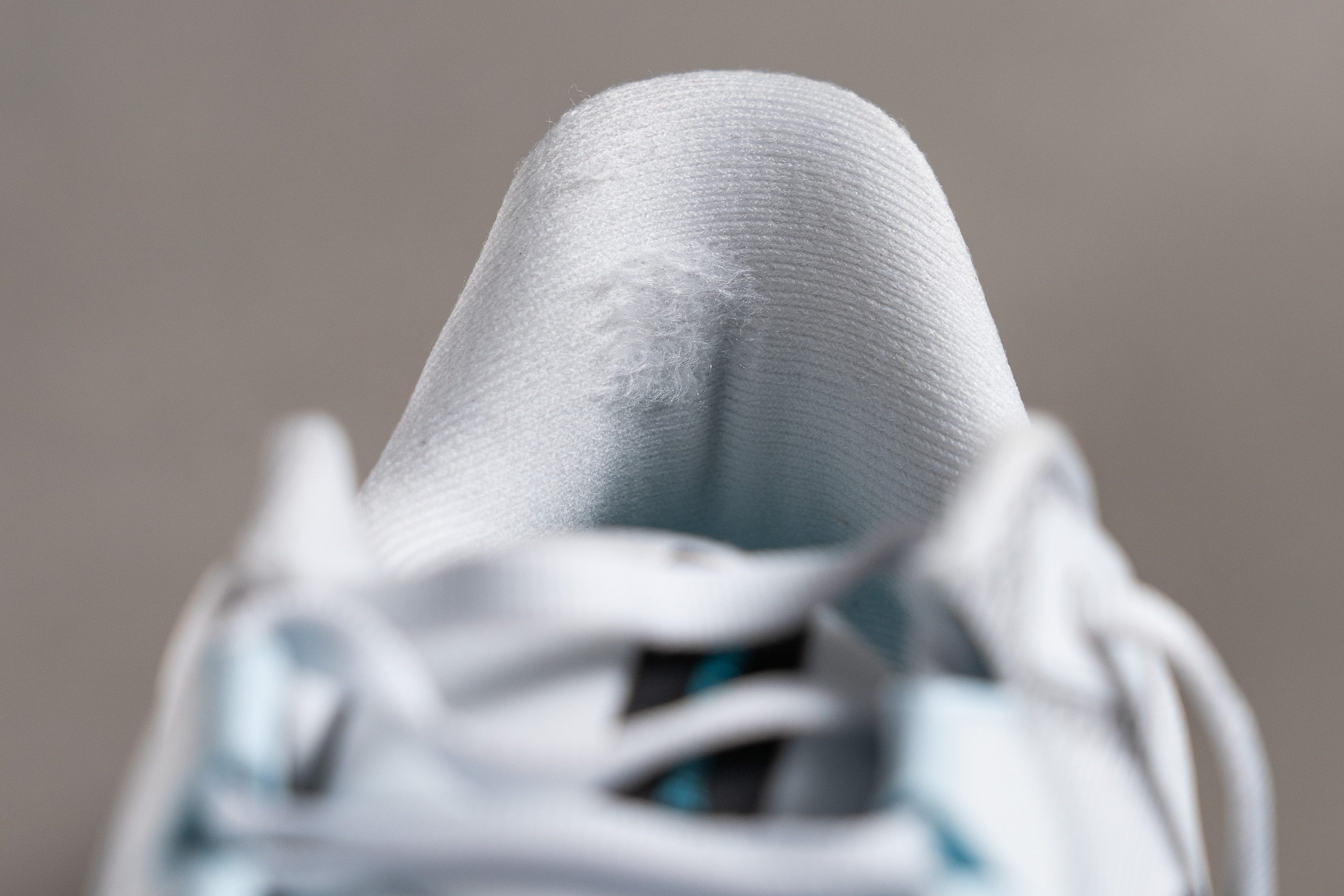
| Pegasus 41 | 4 |
| Average | 3.4 |
Outsole durability
In our third and final Dremel test, we increased the tool's revolutions up to 10,000 to truly challenge the rubber.
What we found left us moderately satisfied. To be honest, given the rubber's hardness, we had hoped for slightly better durability. However, the presence of a 0.9-mm dent confirms that it should still offer a decent lifespan, even when used on a mix of asphalt, easy trails, or gravel roads.
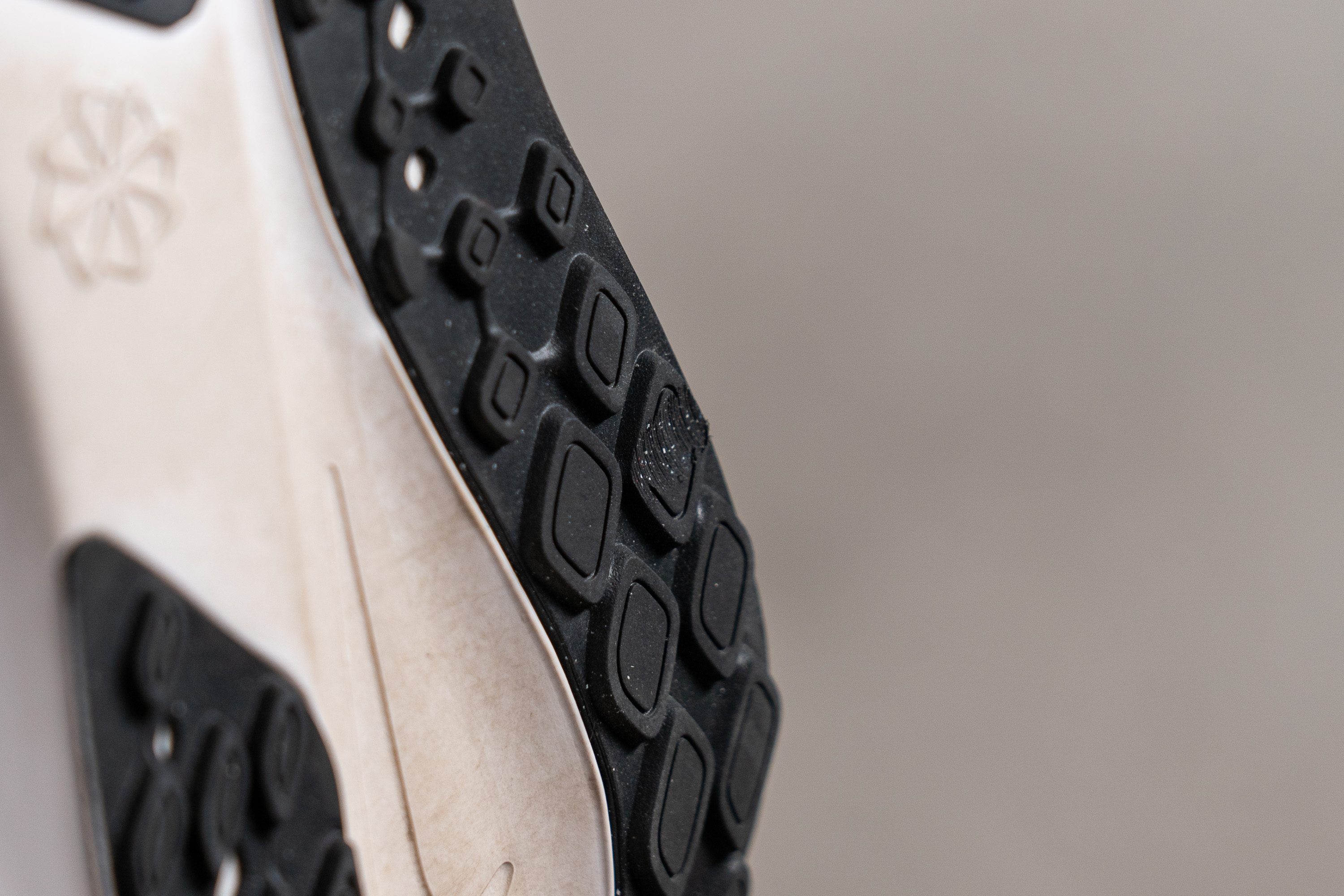
| Pegasus 41 | 0.9 mm |
| Average | 1.1 mm |
Outsole thickness
We also checked the thickness of the rubber, and at 3.0 mm, it should pose no problems at all. It’s an average design choice, which fits very well what we consider to be the "standard" running shoe after 41 editions.
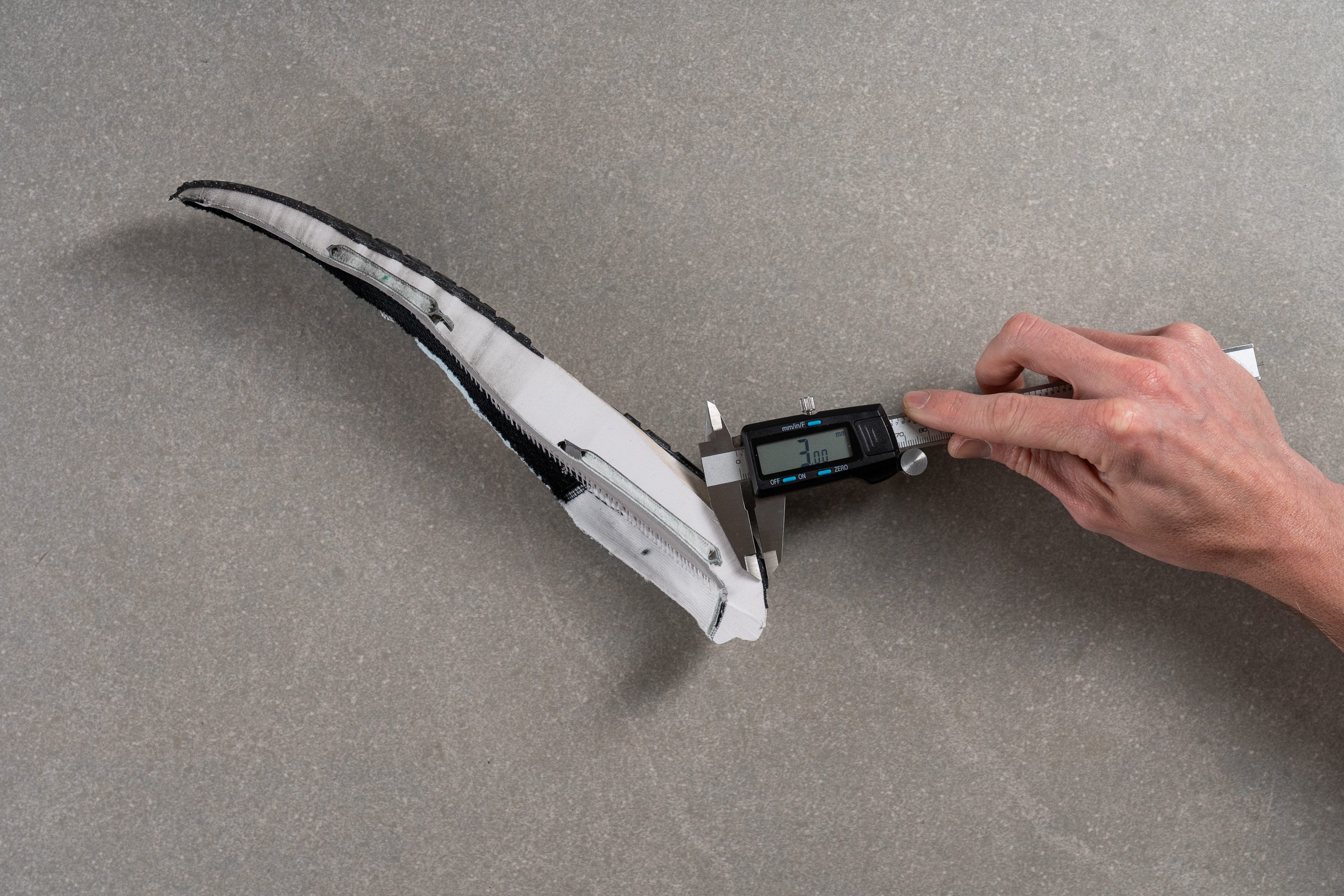
| Pegasus 41 | 3.0 mm |
| Average | 3.2 mm |
Misc
Insole thickness
We discovered that the insole has a thickness of 5.1 mm, which enhances the overall softness of the shoe, giving it a more luxurious feel than previous Pegasus.

| Pegasus 41 | 5.1 mm |
| Average | 4.5 mm |
Removable insole
We were able to remove the insole and, thanks to the shoe's standard last, we easily replaced it with some aftermarket footbeds.
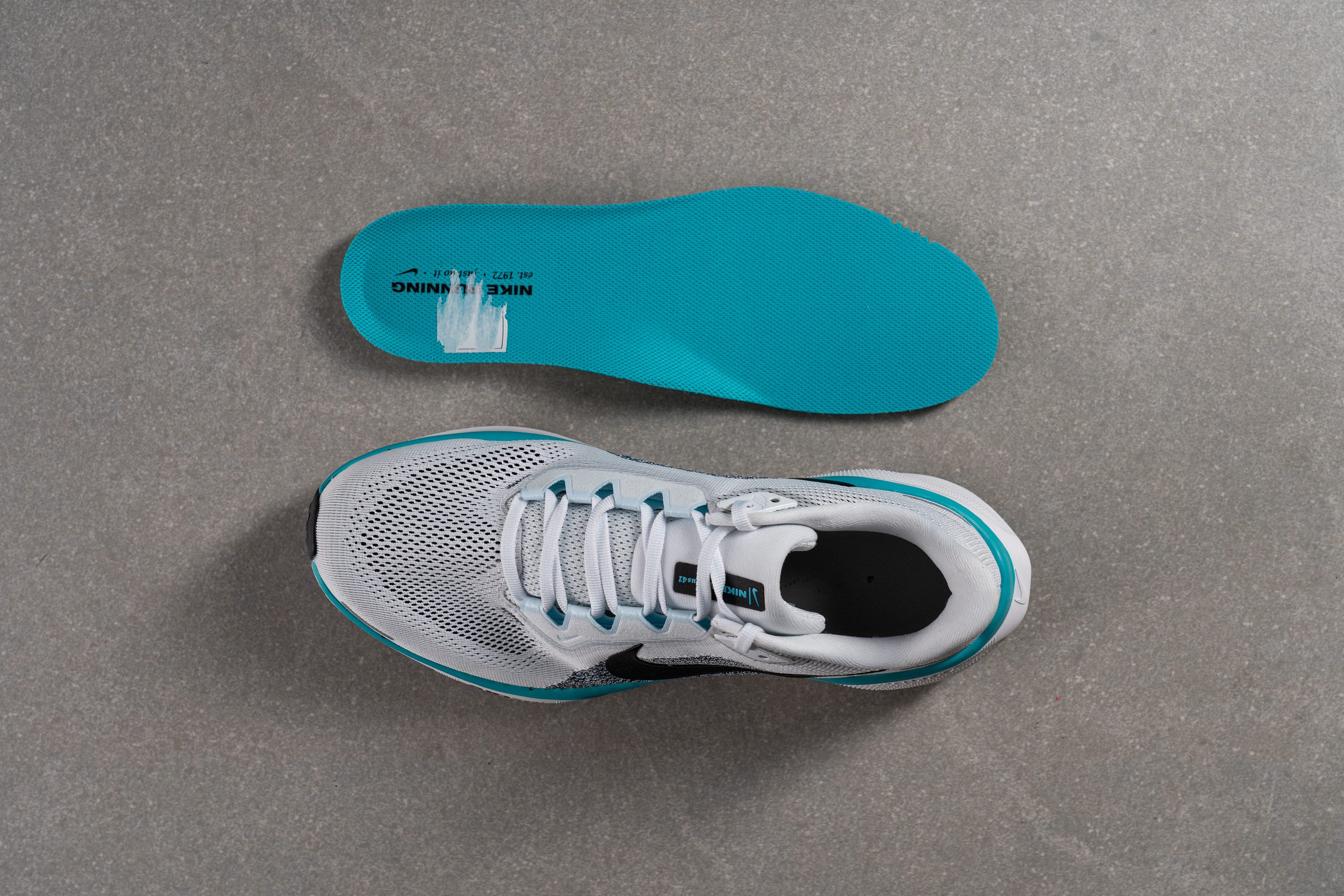
| Pegasus 41 | Yes |
Midsole softness in cold (%)
While ReactX offers several improvements over React, we found that its performance in cold temperatures isn't one of them. In our lab tests, the Pegasus 40 became 19.1% firmer after 20 minutes in the freezer, whereas the v41 hardened by 37.1%.

| Pegasus 41 | 37% |
| Average | 24% |
Reflective elements
Achieving an A grade in every aspect also means including reflective elements for us, and the Peg 41 delivers with three reflective pieces—one inside and two outside.
It would be easy for them to overlook these tiny details and save a bit of money on each pair—similar to the famous American Airlines olive story—but we believe that such a choice would have been far less beneficial for Nike.
| Pegasus 41 | Yes |
Tongue padding
At the end of the day, the Peg aims to satisfy everyone, and the best way to do that in a running shoe is by adding just the right amount of padding in the tongue.

That's exactly what Nike accomplished. With 6.6 mm of padding in a single slab of foam, we found it provides ample cushioning—even for those who tighten their laces with Hulk-like strength. We also appreciate that it features slightly less padding than its predecessor's 8.6 mm, which felt a bit excessive to us.
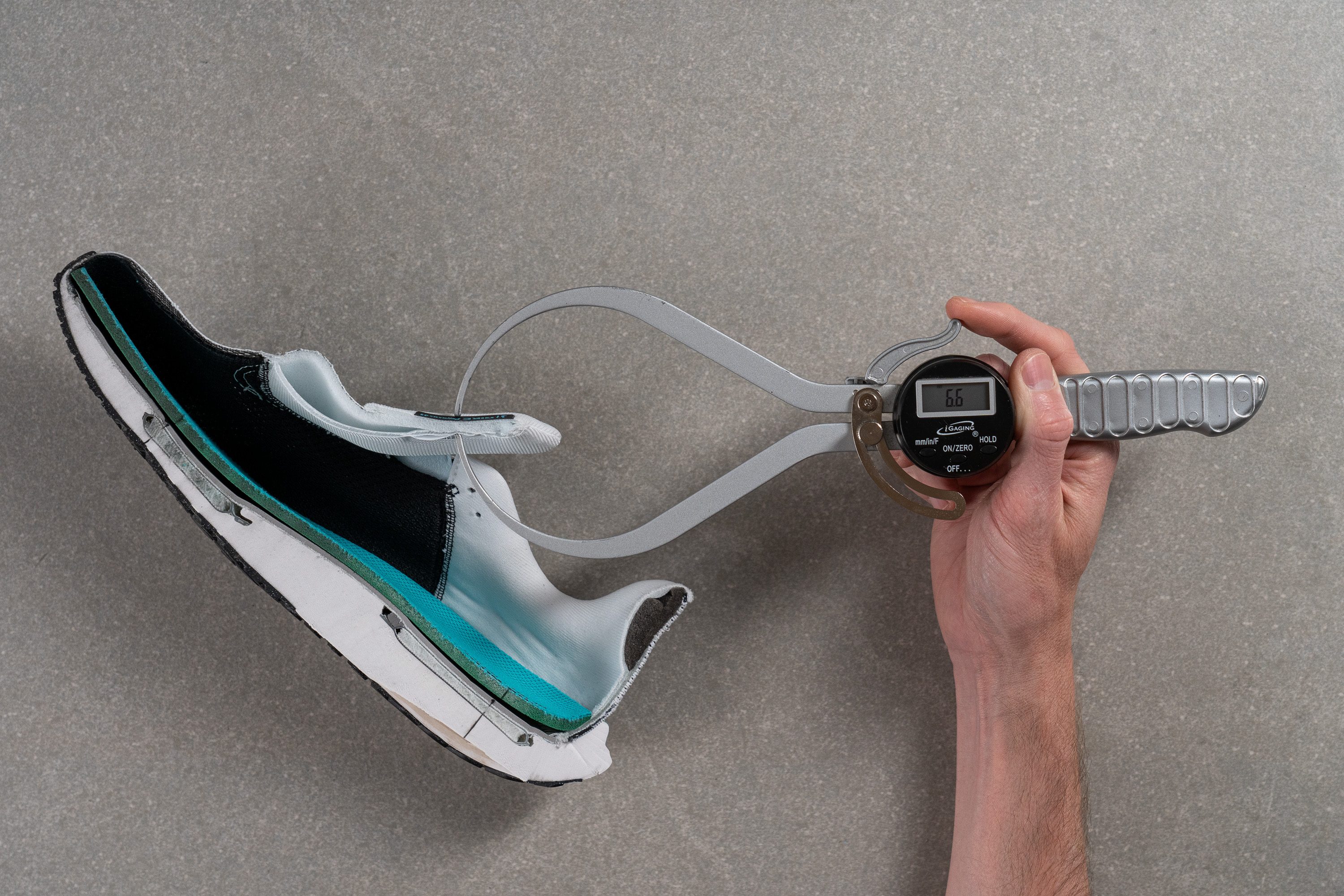
| Pegasus 41 | 6.6 mm |
| Average | 5.8 mm |
Tongue: gusset type
While we often encounter shoes priced over $150 with a tongue that shifts around and drives us crazy in our test runs, we are thrilled to confirm that the Pegasus 41 keeps its fully-gusseted tongue.
This design ensures it's securely attached to the sides, significantly improving the shoe's fit, so it didn't bother us even at fast paces. Another box checked!
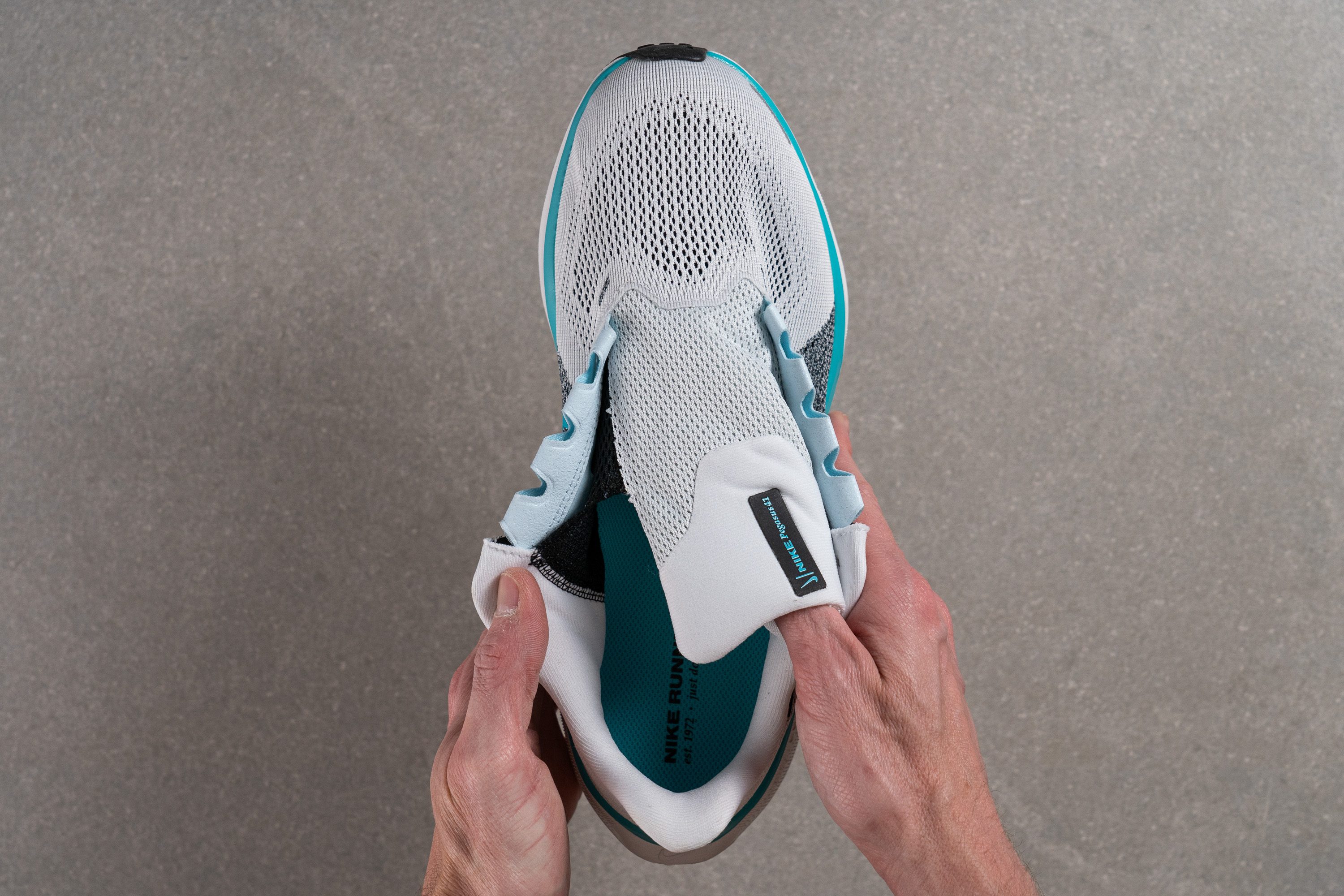
| Pegasus 41 | Both sides (full) |
Heel tab
We discovered that the Pegasus 41 maintains the same Achilles design as previous models, such as the Pegasus 40, marking yet another year without a finger-loop heel tab.
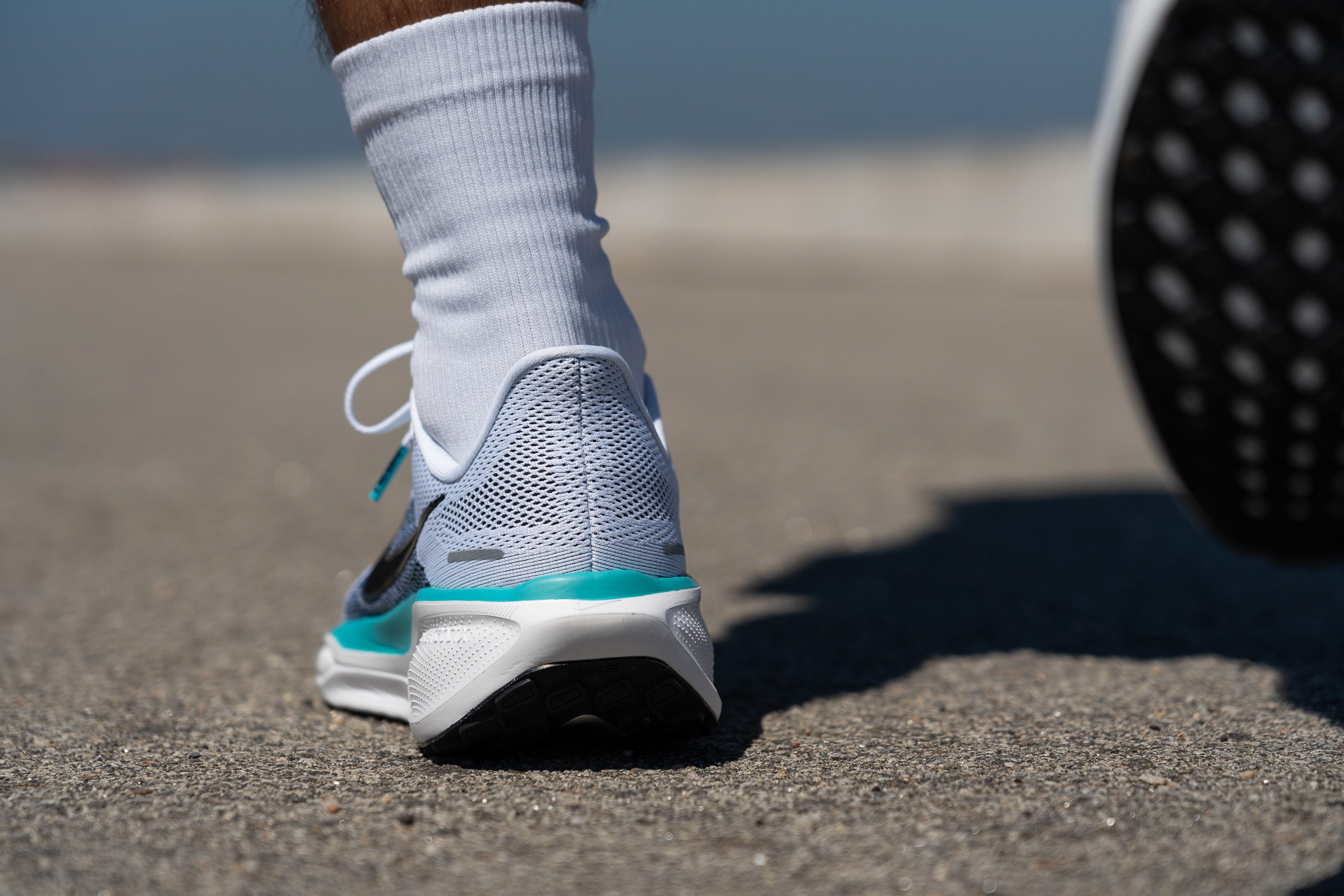
| Pegasus 41 | None |

